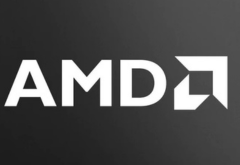Driven by consumerism, B2B markets which were closed transactions have been influenced by B2C market. High discounts and low margins are the result of such proliferation of e-commerce sites – especially E-auction and E-sourcing markets are growing fast where enterprises leverage Internet to source the best at the lowest cost. Alternately focusing on services also helps to sustain revenue in the low margin product business.
E-commerce is essentially Business to Consumer (B2C) transaction. Or is it? With marketplace models coming into prominence, Business to Business (B2B) have become easy to connect – as scaling into anonymous geographies has been made easy. This results in a direct impact on how companies reach out to their enterprise customers. With customers also reaching out through Internet, and announcing their needs on the net, an all-out war is on and its undercurrents have a huge impact on business to business transactions scenario.
First let us examine the B2C scenario to understand the impact of the E-commerce phenomenon to understand the B2B current better. Suresh K, an independent consultant who works with IT channel partners says, “Online retailing firms have lately started receiving strong opposition from all the stakeholders of modern retailers – from consumer goods manufacturers to distributors and resellers to traditional retailers. This is because the discounts used to get the money out of the consumer’s wallet has given them a pretty huge share compared to the traditional players.”
Krishna KV adds, “the worst blow has been handed to the offline retailers, wholesalers and players in channel business. It is a tough ask to survive in this market!” Suresh K adds, “Original equipment manufacturers such as Dell and HP have somewhere mentioned that that some of the online retailers for electronic goods are not their authorised retailers per say. However, as online retail picks up, some of the original equipment manufacturers have shifted their exclusive allegiance beyond the existing players.”
More than $ 1 billion sales is achieved by e-tailers like Flipkart and most of other online retails leverage fast sales, as they have a wide and expansive supply chain network devoid of intermediaries. The savings can be passed on to consumers with aggressive discounts, thereby allowing these retailers to get a huge market share. This is a body blow to the small channel players who are into Personal Computing, Mobile and Consumer Electronics.
Suresh K says, “ there is a shift in the way prices are getting dictated in the market, and mostly this would be majorly affected by the online retaining channels in the years to come.” Some of his customers are prepared to close the consumer side of the business – because the average sales per week has been drastically impacted which is attributed to both slowdown in the market as well as online retailing, thereby hurting the share and profitability of traditional channel partners.
One PC manufacturer, who did not want to be named, say that they have pulled back from selling products with some of the retailers online who could disrupt the pricing and value offerings for the company as well as the other retail channels. The company has now ensured that it pulls off its products from some of the websites that pushed for price reductions and discounts and have chosen to collaborate with online partners that are more willing to adhere to their terms and conditions and have been authorised to be the online resellers of their products.
The online channel has especially hurt the smaller company and regional traditional channel sales adversely and a couple of have made representation to the government to enforce a ban on FDI that help promote E-commerce firms as India allows for funding by foreign companies in the field of online retailing. Krishna points out a story about a distributor for Samsung and Dell products to the traditional retailers in Karnataka, got over 4,000 small offline retailers selling books, electronics and apparel together, and formed an industry body called We Will Act to lobby against e-commerce firms. “Margins have almost vanished and all offline retailers, especially the small, regional ones are feeling the pain. It’s not possible for offline retailers to compete against the predatory pricing of online retailers and there are several firms, including mine, that have shut shop because of that,” he said.
Krishna says – e-commerce is bound to have an adverse impact on sales. “Ecommerce is a new industry and clearly flush with money. We are seeing multiple instances of predatory pricing. However, it is not sustainable in the long run,” he said.
Hariharan Mahadevan, a retail expert comments that offline retail stores – especially for mobile phones are still prevalent. He quotes some of the retailers like Mobile Store, Poorvika mobiles still sell smartphones across their offline stores, isn’t fazed by the deep online discounts even they have online stores. He says “Viveks went online few months ago and are listing in Amazon.”
Suresh concurs. He adds- “The above factors are true for consumer oriented business. For B2B markets, the E-commerce market place really helps in creating an opportunity for enterprises, through some innovative methods”. Krishna talks about how e-auction has matured over a period of time “e-auction sites are the first of the block E-auctions have enabled enterprises to get the best bargain without compromising the quality. It is one of the most proven ways to negotiate, ” he says.
Suresh K who has led many e-auction responses during his corporate stint, says that e-auctions are the most transparent method for negotiations and the stress of protracted negotiations are avoided. According to an AT Kearney Report, about 80% of SME”s use ICT tools and 57% sell via internet. E-sourcing, which is essentially a buyer driven market, is keen to make more than $1 billion worth of purchases in the coming year. This is massive. “However, the major e-auction sourcing is done by the Central and state governments, and that tops $3 billion. It has been a major method of tendering process, he adds .
According to business site abhinavjournal.com, government B2B market is more than $400 million, and that is purely taking Enterprise to Enterprise transactions into account. With mobile Internet usage increasing fast, Mobile commerce will also increase fast. Dependable Internet connections have resulted in many devices that can access Internet, and in 2014, the mobile Internet traffic has surpassed the desktop Internet traffic. This is a major influencing factor in the way forward for B2B commerce.
However, smaller channel service providers still manage to retain those loyal clients because the customers still consult before buying. But the margins are lower, and customer base is dwindling. Still services business gives some hope, says Hariharan Mahadevan. Services business have not gone online entirely. They have the standard – Email, telephonic support model and Channels still get customers who come to them for service after buying online.
The influence of E-commerce and M-commerce only going to increase. It is important for small scale channel providers to identify the means to grow, and focus on areas like services and tie-up with online partners. Diversification into new product areas and also focusing on services will help their growth.
 Latest Technology News Today – Get Latest Information Technology Updates and Services Latest Technology News Today – Get Latest Information Technology Updates and Services
Latest Technology News Today – Get Latest Information Technology Updates and Services Latest Technology News Today – Get Latest Information Technology Updates and Services 









